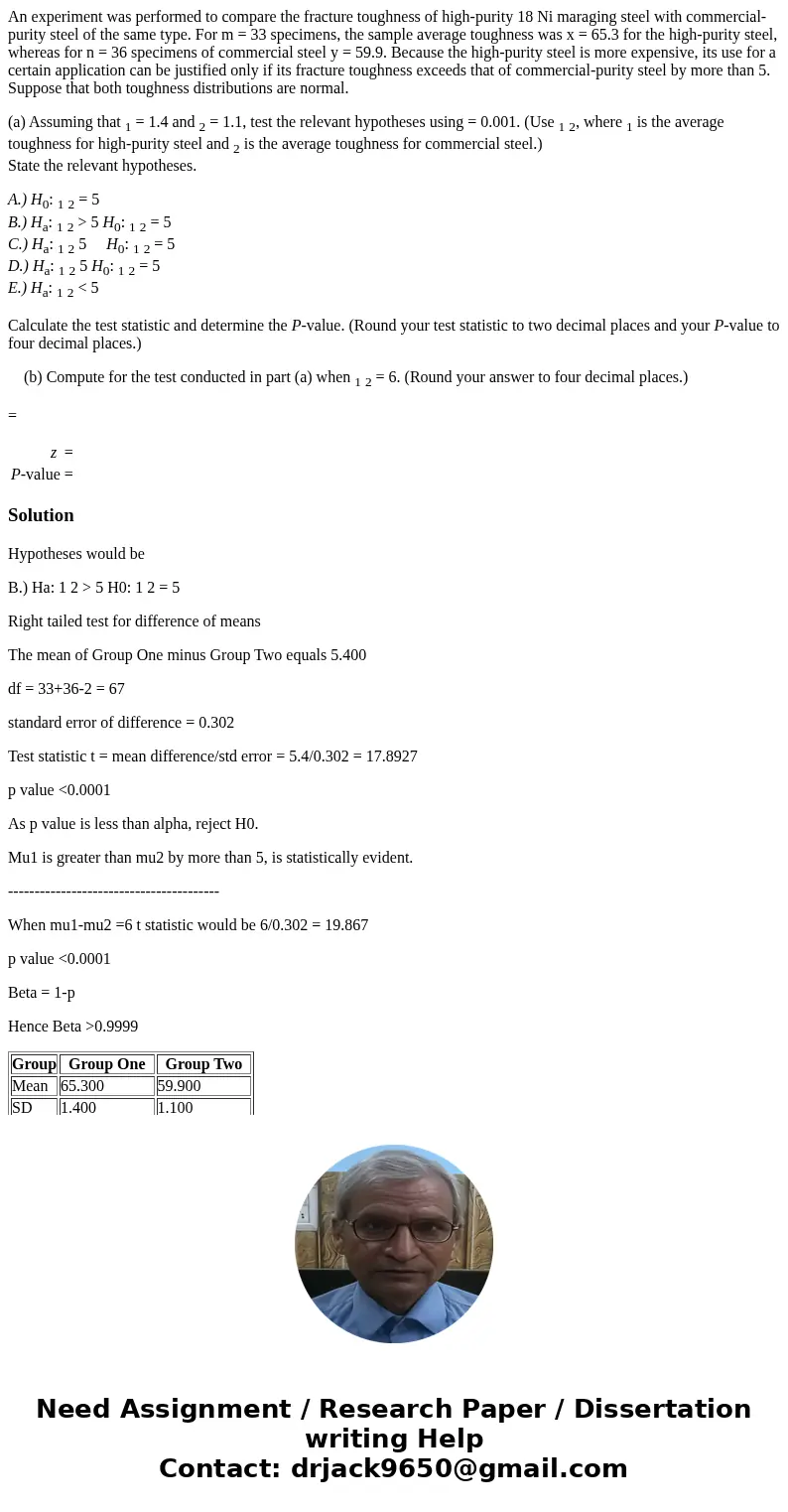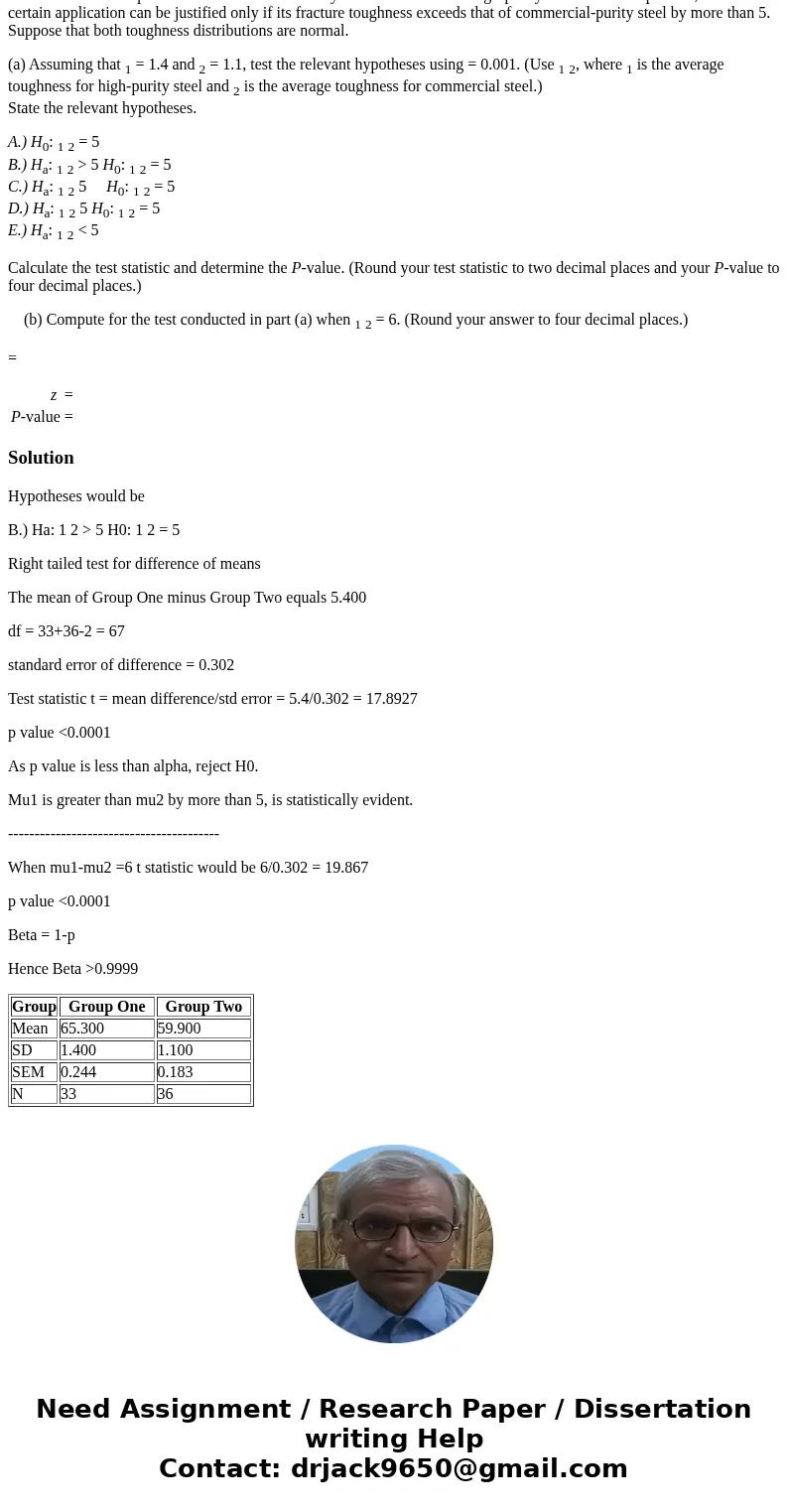An experiment was performed to compare the fracture toughnes
An experiment was performed to compare the fracture toughness of high-purity 18 Ni maraging steel with commercial-purity steel of the same type. For m = 33 specimens, the sample average toughness was x = 65.3 for the high-purity steel, whereas for n = 36 specimens of commercial steel y = 59.9. Because the high-purity steel is more expensive, its use for a certain application can be justified only if its fracture toughness exceeds that of commercial-purity steel by more than 5. Suppose that both toughness distributions are normal.
(a) Assuming that 1 = 1.4 and 2 = 1.1, test the relevant hypotheses using = 0.001. (Use 1 2, where 1 is the average toughness for high-purity steel and 2 is the average toughness for commercial steel.)
State the relevant hypotheses.
A.) H0: 1 2 = 5
B.) Ha: 1 2 > 5 H0: 1 2 = 5
C.) Ha: 1 2 5 H0: 1 2 = 5
D.) Ha: 1 2 5 H0: 1 2 = 5
E.) Ha: 1 2 < 5
Calculate the test statistic and determine the P-value. (Round your test statistic to two decimal places and your P-value to four decimal places.)
(b) Compute for the test conducted in part (a) when 1 2 = 6. (Round your answer to four decimal places.)
=
| z | = | |
| P-value | = |
Solution
Hypotheses would be
B.) Ha: 1 2 > 5 H0: 1 2 = 5
Right tailed test for difference of means
The mean of Group One minus Group Two equals 5.400
df = 33+36-2 = 67
standard error of difference = 0.302
Test statistic t = mean difference/std error = 5.4/0.302 = 17.8927
p value <0.0001
As p value is less than alpha, reject H0.
Mu1 is greater than mu2 by more than 5, is statistically evident.
----------------------------------------
When mu1-mu2 =6 t statistic would be 6/0.302 = 19.867
p value <0.0001
Beta = 1-p
Hence Beta >0.9999
| Group | Group One | Group Two |
|---|---|---|
| Mean | 65.300 | 59.900 |
| SD | 1.400 | 1.100 |
| SEM | 0.244 | 0.183 |
| N | 33 | 36 |


 Homework Sourse
Homework Sourse